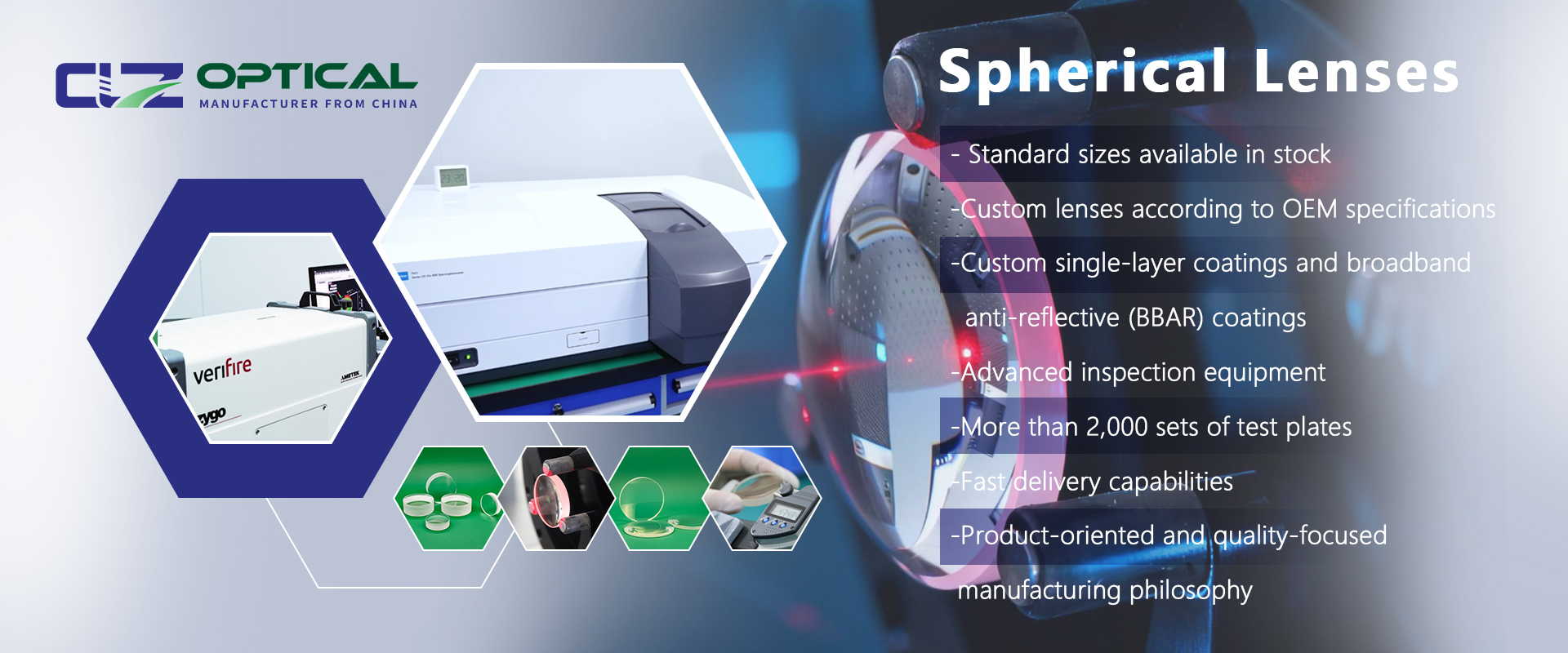What is Achromatic Lens and Why Use an Achromatic Lens?
Aug. 14, 2025
Achromatic cemented-double lenses represent a paradigm shift in precision optical systems, where materials science and optical engineering converge to redefine color fidelity. This innovation drives transformative progress across industrial automation, biomedical research, and high-definition imaging, delivering unparalleled accuracy in complex optical environments.
1. Optical Principles
1.1 Material Combination Design
The achromatic lens leverages precisely paired optical glasses with complementary dispersion properties. Crown glass (e.g., BK7 series) with low dispersion bonds to flint glass (e.g., F2 series) using UV-cured optical cement. Crown glass governs red light transmission through its flat dispersion curve, while flint glass's steep refractive index gradient aggressively modulates blue light. Their interface creates a nanoscale optical path difference compensation layer, establishing wavelength-selective refraction channels.
1.2 Chromatic Correction Mechanism
As polychromatic light traverses the lens, differential modulation occurs: long-wavelength red light maintains near-parallel transmission via crown glass, whereas short-wavelength blue light converges under flint glass's influence. By calculating Abbe number ratios and partial dispersion coefficients, C-line (red) and F-line (blue) foci precisely coalesce. This wavelength synchronization eliminates color fringing at image margins, significantly enhancing MTF in optical systems.

2. Application Fields
2.1 Biomedical Imaging
In pathological diagnostics, achromatic objectives resolve critical challenges in stained specimen observation. For HE-stained tissue sections, the cemented structure confines chromatic shift at nuclear (hematoxylin blue) and cytoplasmic (eosin red) boundaries to sub-micron levels, preventing dye blending artifacts. In confocal microscopy, Z-axis resolution for multicolor fluorescence markers triples, enabling accurate 3D cancer cell modeling. In vivo microcirculation imagers enhance capillary network contrast through precise focusing on hemoglobin absorption peaks.
2.2 Industrial Inspection
Achromatic lenses prove indispensable for high-speed production monitoring. When inspecting plastic (PC, PMMA) films at meter-per-second velocities, they overcome dispersion artifacts from surface diffuse reflection, reliably detecting micron-scale fisheyes and contaminants in transparent/matte finishes. For LCD panel QA, full-spectrum correction maintains color coordinate stability across diverse backlights (LED/CCFL/OLED), slashing optical misjudgment rates under industry-critical standards.
2.3 Imaging Systems
Professional 4K camera lenses with achromatic design fundamentally suppress edge chromatic aberration in backlit scenes. When capturing metallic textures or glass facades under intense lighting, purple fringing reduces dramatically versus single-element solutions. Astronomical applications leverage this technology to counteract atmospheric dispersion, achieving sub-arcsecond coincidence accuracy for nebula emission lines (e.g., Ha-656nm, OIII-501nm), refining deep-sky spectral purity and detail resolution.
3. Technical Advantages
The cemented-double structure simultaneously optimizes spherical and chromatic aberration control across 480-650nm, reducing wavefront distortion by orders of magnitude versus singlets. Through optical coating processes depositing broadband AR films on compound surfaces, average visible light transmission approaches theoretical limits, with breakthrough efficiency in blue-violet sensitive bands.
4. Conclusion
Achromatic cemented-double lenses enable subcellular imaging precision in biomedicine, reliable micron-defect detection in industrial QA, and pristine optical performance in advanced imaging through innovations in precision optical systems. As optical coating and material technologies evolve, these optical components will unlock greater potential in semiconductor inspection, quantum sensing, and other frontier fields.




















